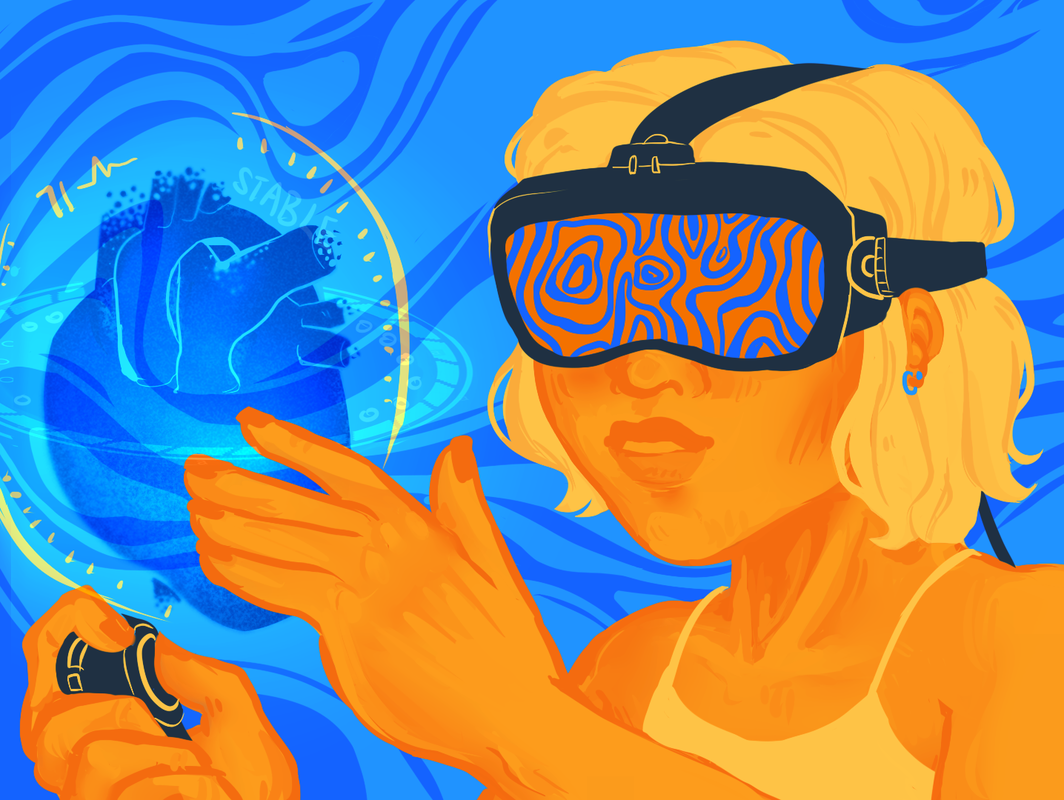|
By Angela Mu When one considers the future of technology in healthcare, virtual reality (VR) is undoubtedly an exciting prospect that holds the potential to revolutionize the industry. Truly, the applications of VR extend far beyond entertainment and immersive and interactive game experiences. Through merely a headset and a couple of controllers, VR can immerse users in a virtual environment where they’re able to visualize and interact with elements in a simulated three-dimensional space. Not only can users see an entirely different world, but they may also be able to hear and feel the objects in the virtual environment through audio feedback and vibrations from the controllers. Perhaps one of the greatest uses of VR lies in its applications for education, whether it’s educating the general public or even facilitating training for surgeons and medical students. When it comes to bridging the gap between classroom and practice, VR can enable students to visualize concepts such as human anatomy more easily and see how every layer of muscles, bones, and organs is interconnected. Already, schools such as the University of California, San Francisco, Oxford University, and the University of Northampton have incorporated VR simulations in their curriculums to aid learning. Similar virtual simulations may also be used by doctors to plan and rehearse surgeries ahead of time. A study performed at the University of California, Los Angeles’s School of Medicine found that VR-trained surgeons demonstrated a 230 percent boost in their performance in comparison to those who were traditionally-trained—they had not only performed more efficiently, but also more accurately. VR may further help healthcare professionals and medical students develop empathy, a quality which is essential to forging authentic connections with patients. While healthcare workers are often approachable and friendly, it may be difficult for them to truly understand what patients are going through without having undergone those situations firsthand. Simulations may help caregivers to virtually experience various illnesses, identity biases, or real-life situations such as being the target of verbal abuse and domestic violence. For example, to help individuals understand macular degeneration, the VR simulation may place dark spots in the users’ field of view to blur their vision. A software developed by Embodied Labs also allows users to place themselves into the bodies of people of various identities, enabling caregivers to better recognize how misconceptions and biases may impact patients’ physical and mental health. Such an experience encourages caregivers to cultivate a more inclusive environment for patients of all backgrounds. Applications of VR also extend to patient rehabilitation, as simulations may help patients overcome mental health afflictions. Through a method called therapeutic VR, relaxing and calming experiences may be crafted to help users destress, relieve anxiety, and treat depression. To assist those with PTSD, virtual experiences can re-expose these individuals to the source of their trauma while introducing relaxing scenarios to assuage their fears. While the possibilities of VR remain endless, its scalability and wide application are hindered by the cost of the headset and other associated equipment. The bulkiness of the headset goggles and potential of inducing motion sickness also make it a less than ideal user experience. Nevertheless, the uses of VR extend across several industries, from aerospace and education to entertainment and business, deeming it an exciting prospect for the future of technology and healthcare.
0 Comments
Leave a Reply. |
Categories
All
Archives
April 2024
|

